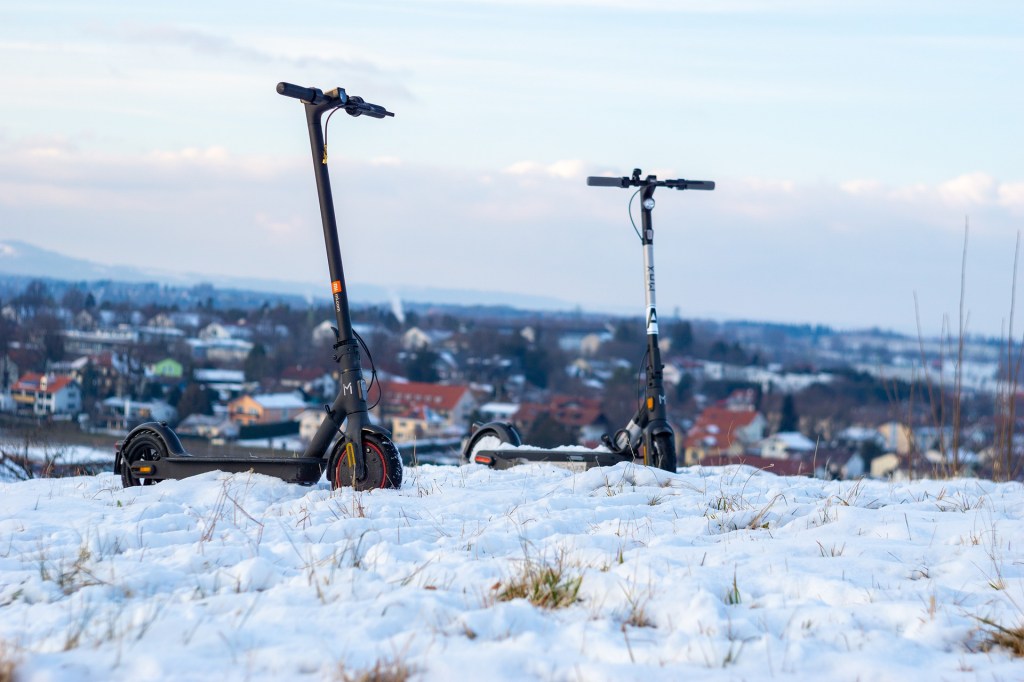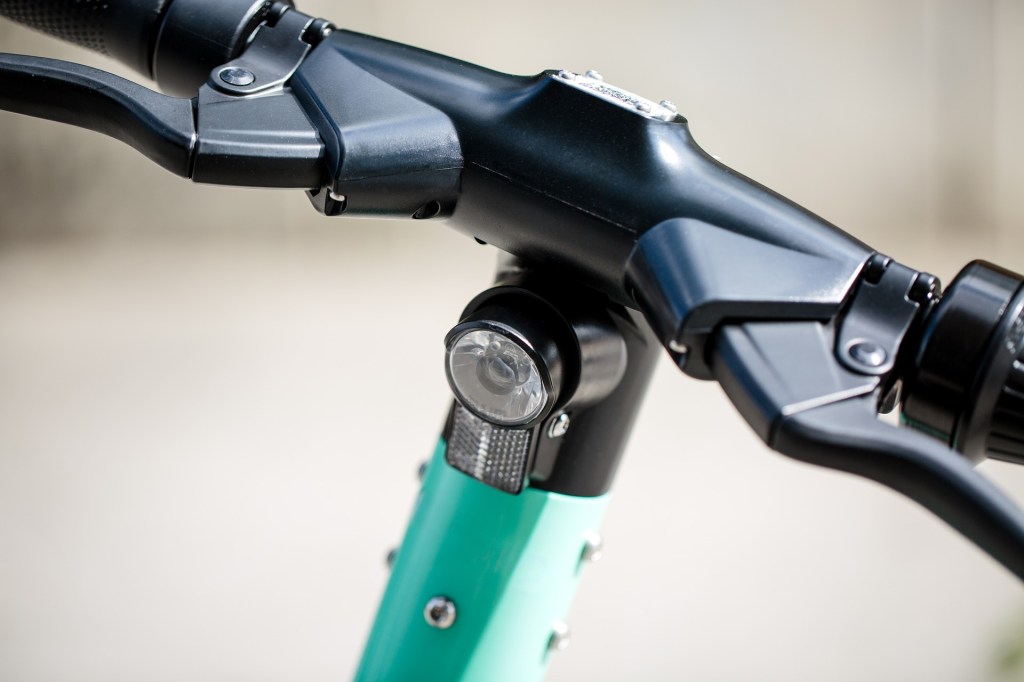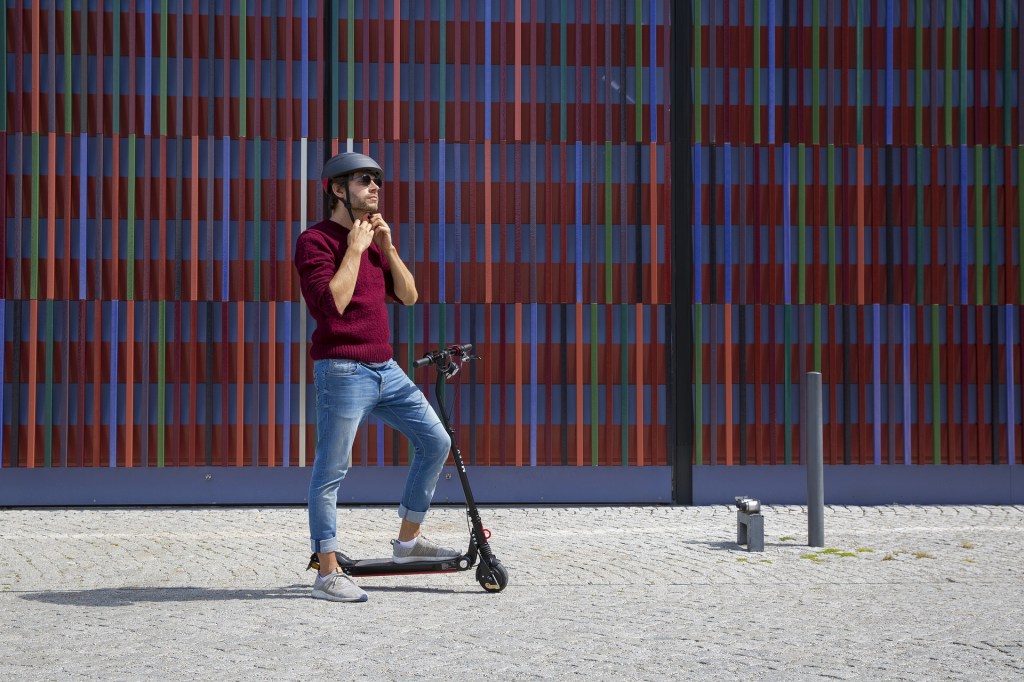Is It safe to drive an electric scooter on rainy days?

Electric scooters have become a common presence in cities across the world, almost overnight. Fans of e-scooters celebrate them for their accessibility, efficiency, and cost-effectiveness, hailing them as a green-friendly mode of transport for the coming carbon-neutral era. We have given our own run-through of their pros and cons here. But as it’s a question that comes up regularly, we thought we’d give our insight into how well e-scooters can cope with adverse weather conditions and specifically the rain, a question of some importance for residents of countries with notoriously changeable weather such as the UK and Ireland. So, join us as we offer our guidance on the use of electric scooters in rainy conditions. And, while you are here, if you have yet to try an e-scooter and would like to give it a go, why not browse our E-Bike & Electric Scooter Tours in the UK.

E-scooters in the snow
Can You Ride an E-Scooter in the Rain?
The short answer: normal rainy conditions are unlikely to damage your e-scooter or put you at risk — so, we’re getting off to a positive start here. The vast majority of electric scooters being manufactured today are, to some degree, resistant to water damage. However, there are some caveats to this assertion, and for your own safety, and for the good of your wallet should you wish to buy your own scooter, it is recommended that you always pay close attention to the user guidelines of the particular e-scooter you happen to be using.
When e-scooters should certainly not be used is during severe weather conditions. Being electrical devices, e-scooters can be damaged by exposure to water — we all know, water and electronics do not mix! If you find yourself caught in heavy rain, or see that heavy rain, hail, or snow has been forecasted, you should not ride your scooter. Firstly, your visibility is likely to be impaired in such conditions, preventing you from driving safely. Secondly, the cold temperatures and resistance on the surface can put extra, unnecessary strain on your scooter which is a bad idea for the general maintenance of the vehicle. Thirdly, and most importantly, while we said most e-scooters have a degree of water resistance, this can vary wildly depending on your model’s IP rating.

Build quality will vary with your chosen e-scooter
A Note on E-Scooters’ IP Ratings
An IP rating (short for Ingress Protection rating) is an international standard by which a particular device’s ability to withstand damage from water and dust is measured. The IP rating consists of two numbers, the first given is an indication of how well the e-scooter can withstand exposure to dust and other solids; the second relates specifically to water exposure. Understandably, the IP rating will be related to the general build quality of the device you are using, with cheaper models offering less protection. The IP ratings can also be influenced by where the e-scooter is manufactured and sold, as certain markets will value IP ratings higher than others if buyers are more likely to encounter challenging conditions.
In relation to our question, any IP rating with the second number above 4 will offer protection against drizzle and light rain. If the water number is 5 or 6, you can be confident that normal rain will not damage the e-scooter, though you will still want to avoid deep puddles, snow, etc. Even with a high rating, you do not want your device to be submerged in water at any point. If the IP rating for water is below 4, you should try not to expose the device to rainwater at all. As it is difficult for e-scooter manufacturers to know how users have treated their vehicles, water-related damages are not usually covered by the warranty. So, if you are investing in an e-scooter and you live in a country with regular rainfall, you will want to look for a high IP rating.

Electric scooter in the city
Conclusions
We believe that electric scooters are a fun, creative way of moving through urban areas. They are energy efficient, almost noiseless, and much cheaper to run than a car. However, the nature of being on a scooter is that you will be exposed to the elements. Safety should always be a priority and, as with any road vehicle, added care should be taken when travelling across wet surfaces. Drivers of e-scooters will want to have suitable clothing should getting caught in the rain be a possibility. Picking a machine with a good IP rating is essential if you expect to drive in the rain. Riders of bikes will already be used to much of this from cycling, while drivers of cars also drive in the knowledge that the flooding of an engine can be extremely costly. Electric scooters are built to be hardy, but buyers and renters should be well-informed about the risks of travelling in wet weather and strive to cultivate good habits regarding the safe use of their e-scooter.
This brings to an end our discussion of whether electric scooters can be driven in the rain. If you are interested in trying out an e-scooter, take a look at our London Tours by E-Scooter & More. And should you have any questions about this blog or any of our tours, please contact us using the details listed on our website.
